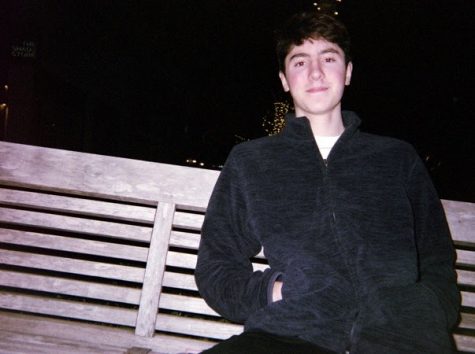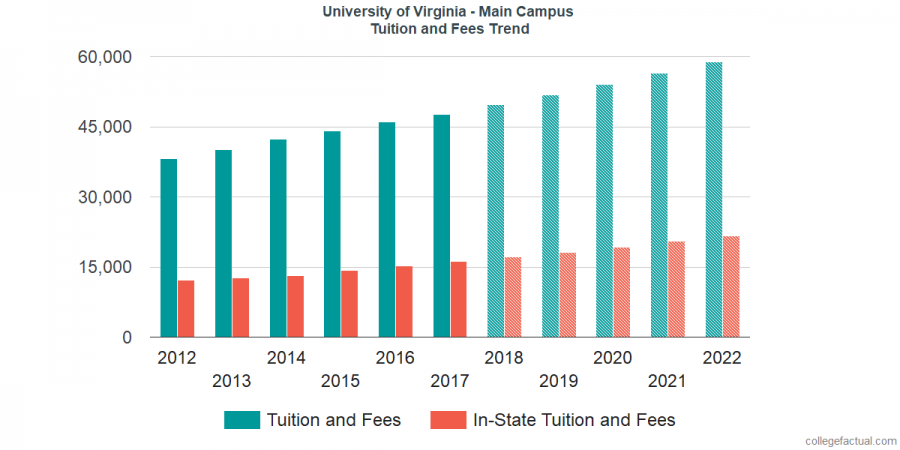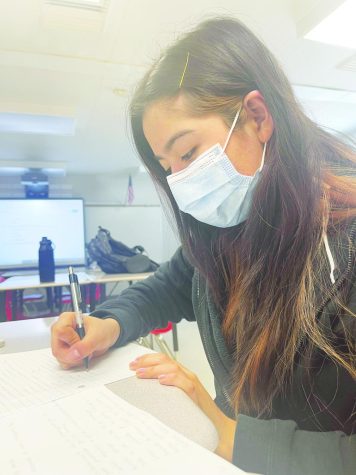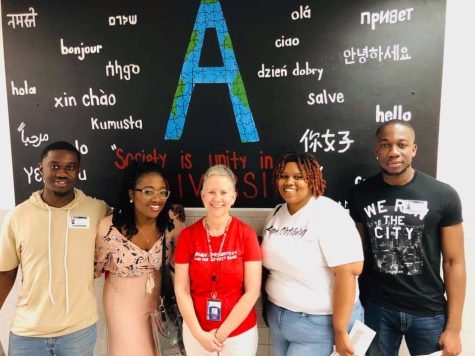Season of Giving? Or taking away?
Studies show that in-state college tuition prices are on the rise
As the holiday season approaches, so does the deadline for regular decision applications.
The majority of students nationwide apply regular decision as the deadline allows for more preparation time. In addition, not all universities offer the early action option and many students tend to stay away from any binding contracts regarding where they will be attending school.
Regular decision or not, it is also a common theme for students to apply to their respective state schools, as the tuition for in-state applicants is significantly lower than out-of state. State schools are significantly cheaper than private institutions as well.
“I’m applying to mostly in-state schools because of the cost and so I can be close to family,” senior Thomas Chang said.
Although money is often a leading factor for students to apply to in-state schools, the cost has been steadily increasing. This only makes the college process harder for students, many of whom at Annandale are on the free or reduced lunch program.
The Commonwealth of Virginia has seen a 79% increase in the average cost of public college tuition in the past ten years. Although funding from the Virginia General Assembly caused all Virginia public colleges to maintain in-state tuition for the 2019-20 academic year, the upwards trend is nonetheless discouraging to students.
“The growing cost of state schools is really off putting,” senior Guinevieve Tran said. “Without some kind of aid, need based or merit based scholarships, it becomes hard for a lot of kids to not accumulate debt.”
The average tuition, including mandatory fees for in-state undergraduates at four-year public colleges is now $12,836, according to the State Council of Higher Education for Virginia.
This marks a $155 (1.2% increase) from last year, owing to the $155 increase in “mandatory non-educational and general fees.”
Meanwhile, average room and board charges total $11,000, an increase of $367 (3.5%).
When all costs are taken into account, in-state undergraduate students attending four-year schools will pay an average of $24,699 this year, an increase of $543 (2.2%).
Although the increase may seem little, in the grand scheme of things, any increase in price discourages students from attending four year institutions.
“My plan right now is to go to NOVA for two years and then a four year college,” Falls Church senior Abby Tran said. “I would have liked to go straight into a four year college but money is always a big factor.”
The numbers speak for themselves, Virginia has a large price to pay in order to take the burden of paying for college off of families; 660 million to be exact.
As prices increase, families pay the price. In order to combat this, the State Council of Higher Education for Virginia released a report in 2017 which looked at new methods of state funding for public four year colleges. This new look on funding came at the time of Virginia state funding cuts for public institutions.
Virginia has missed its goal with making public institutions, resulting in tuition and fees accounting for 53% of the cost in comparison with the state’s goal of 33%.
Despite struggles with cutting the cost of tuition, there is light at the end of the tunnel in Virginia.
Virginia Govenor Ralph Northam proposed a $1.2 billion education package, including a $145 million tax-funded investment to make community college free for students from low- and middle-income households.
The new program, named “G3”, for “Get Skilled, Get a Job, Give Back,” will pay only the balance of tuition leftover after the student uses all eligible forms of financial aid.
The plan provides funding for tuition, fees, and books. For students in the lowest income bracket, it also provides support for expenses including childcare, transportation, and food. Applicants must be eligible for in-state tuition with and income less than or equal 400 percent of the federal poverty level or $103,000 for a family of four.
At a national level, the idea of free college, whether it be a two year or four year institution, has gained popularity.
Although it has been lacking mention as of recently, former Vice President Joe Biden called for a free four years of college in 2015.
Other Democratic presidential candidates have proposed other differing solutions to the high price of higher education.
Elizabeth Warren proposed a $1.25 trillion dollar education plan to eliminate not only tuition at public colleges but also millions of Americans’ student debt.
In addition, Bernie Sanders promoted a more ambitious $1.6 trillion dollar plan to erase college tuition as well as all student debt.
Whether Democratic candidates have proposed ideas for cutting tuition costs, or Virginia state government has taken action against the cost of community college, the problem still persists.
In-state college tuition simply costs too much for what it is advertised as.
“Everyone deserves the opportunity to get a good education and a good job, no matter who you are or how much money you have,” Northam said.

Manny Precht is a senior and the current Co-Editor in Chief of The A-Blast. It is his second year on staff where he was previously the Health Editor. In...











